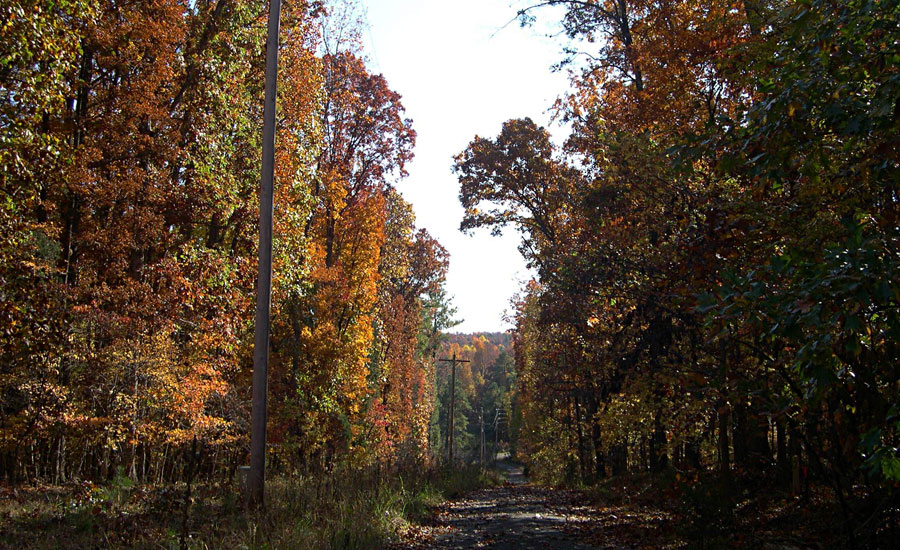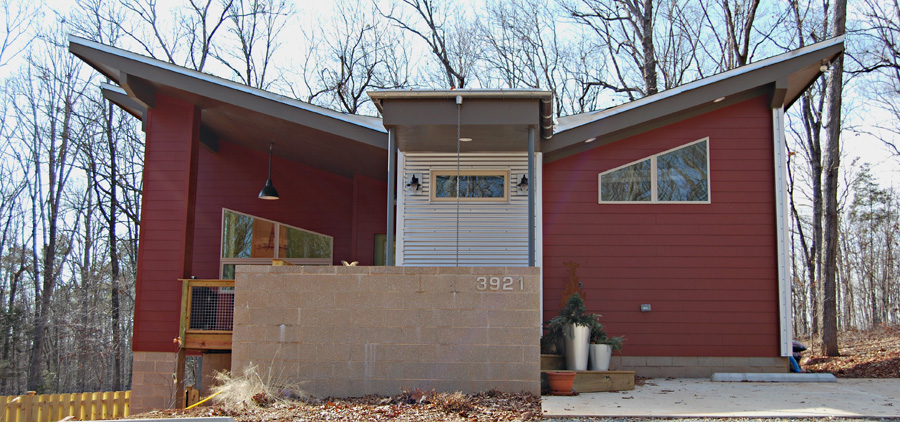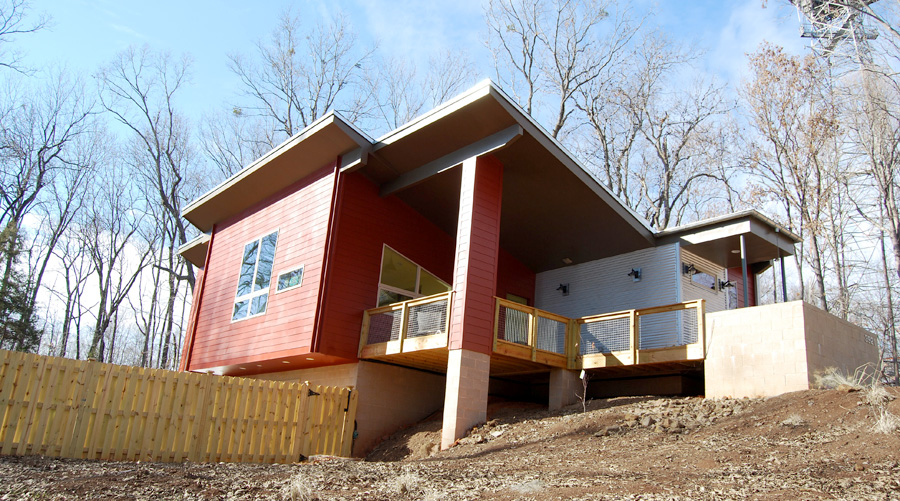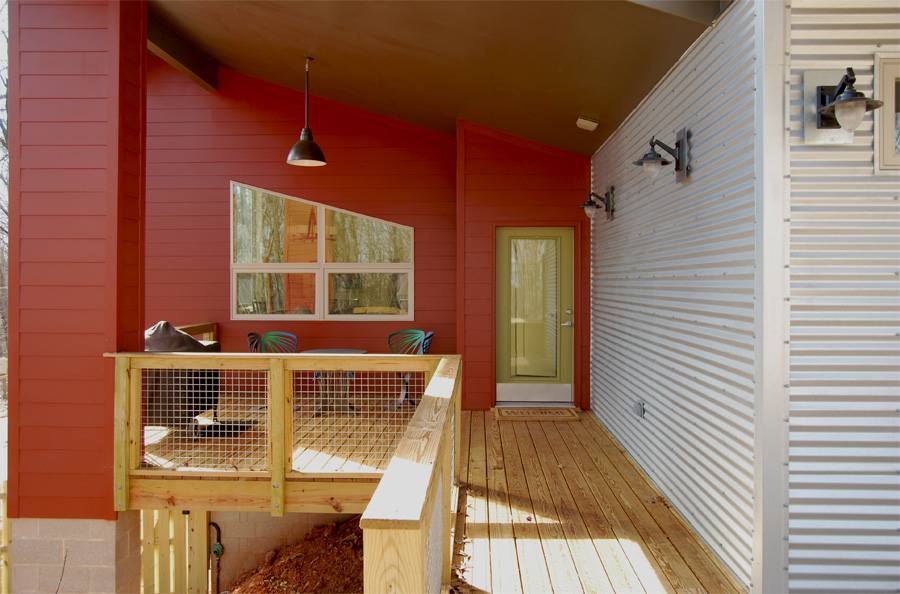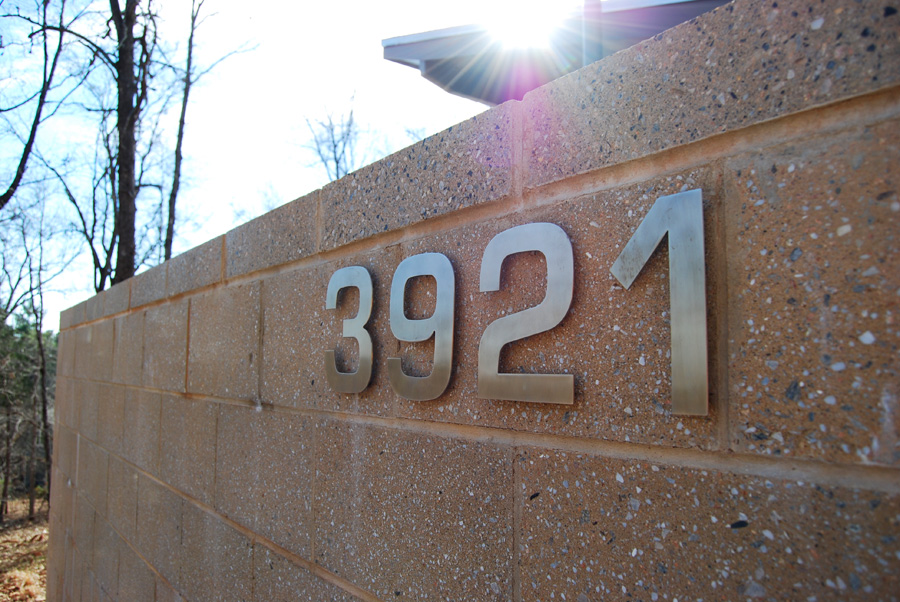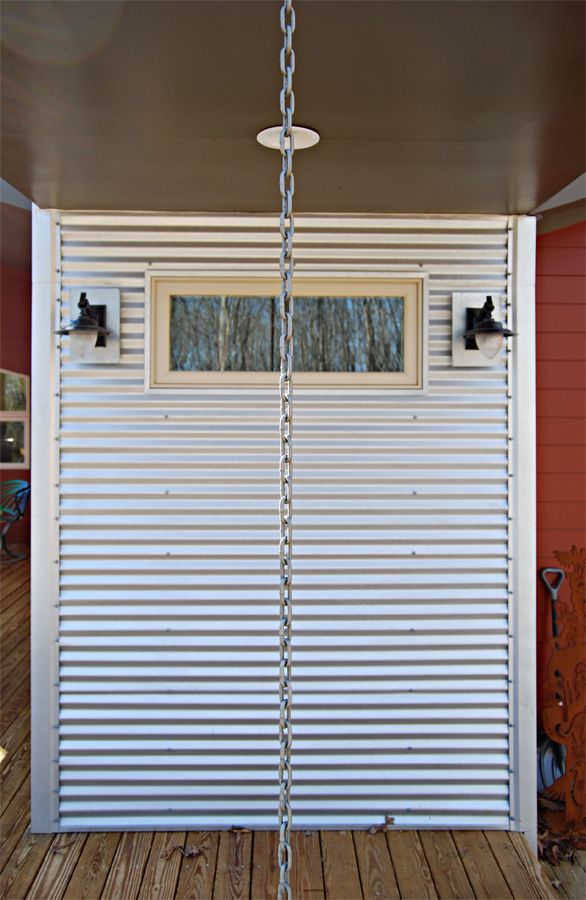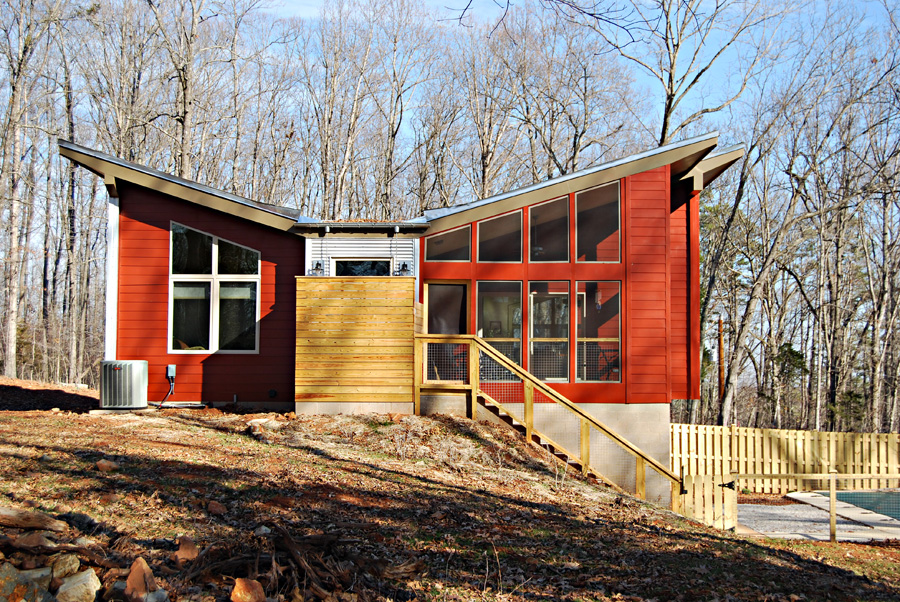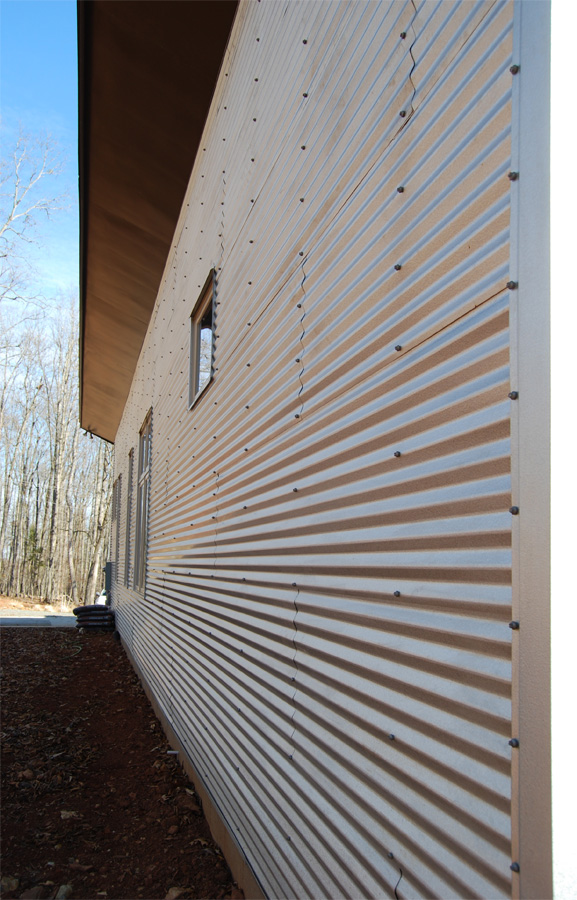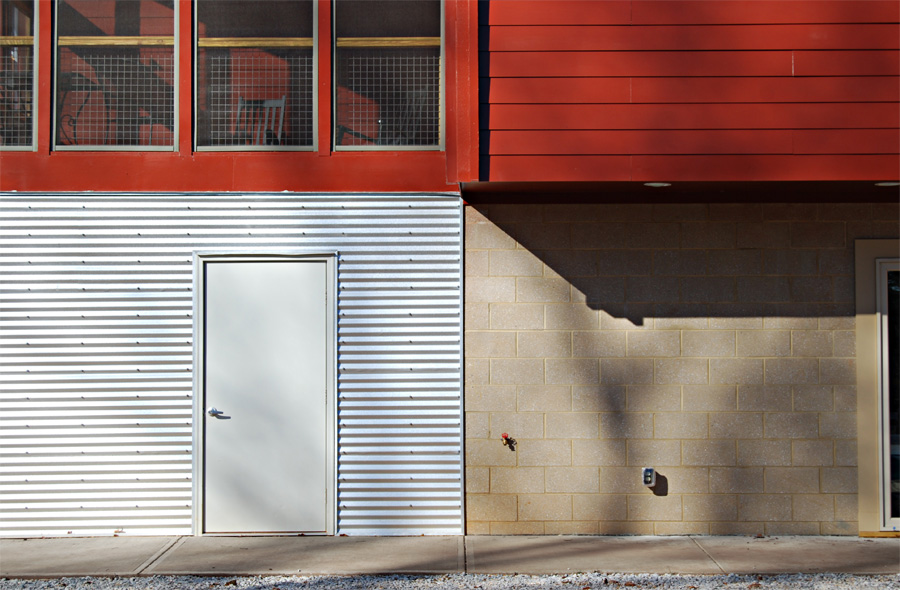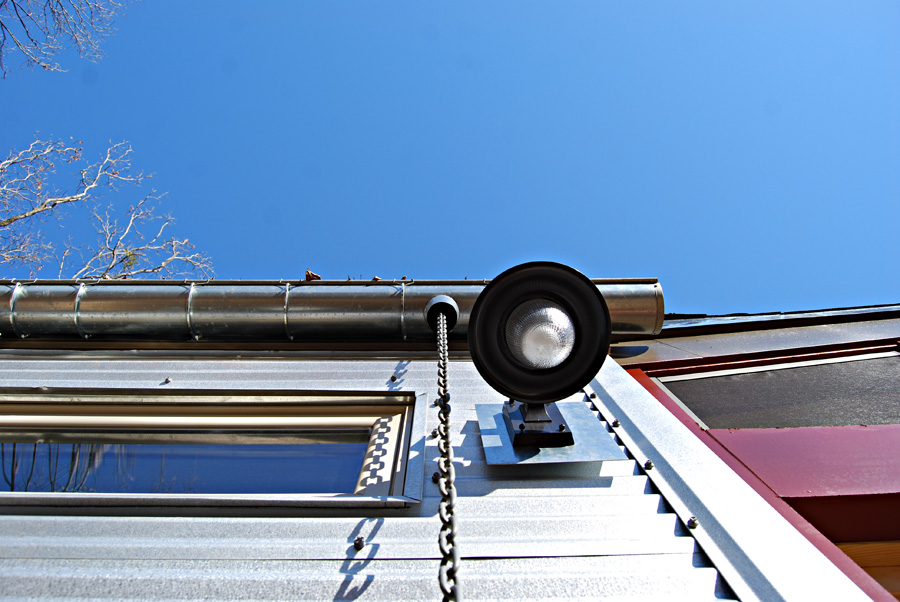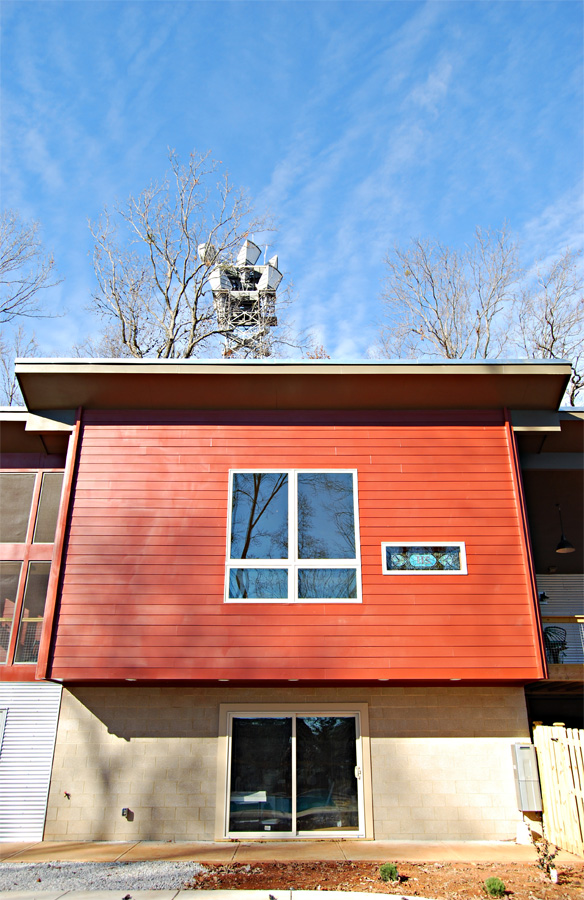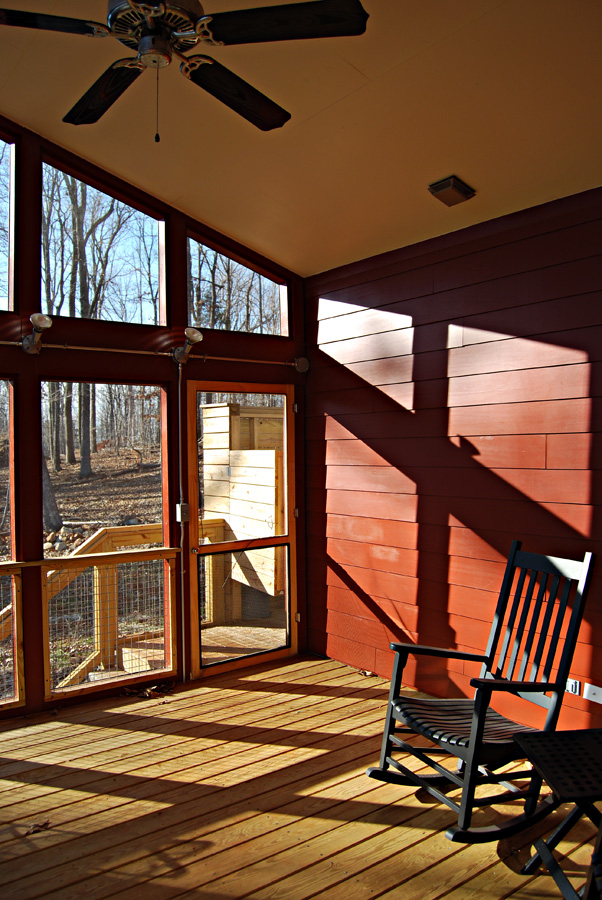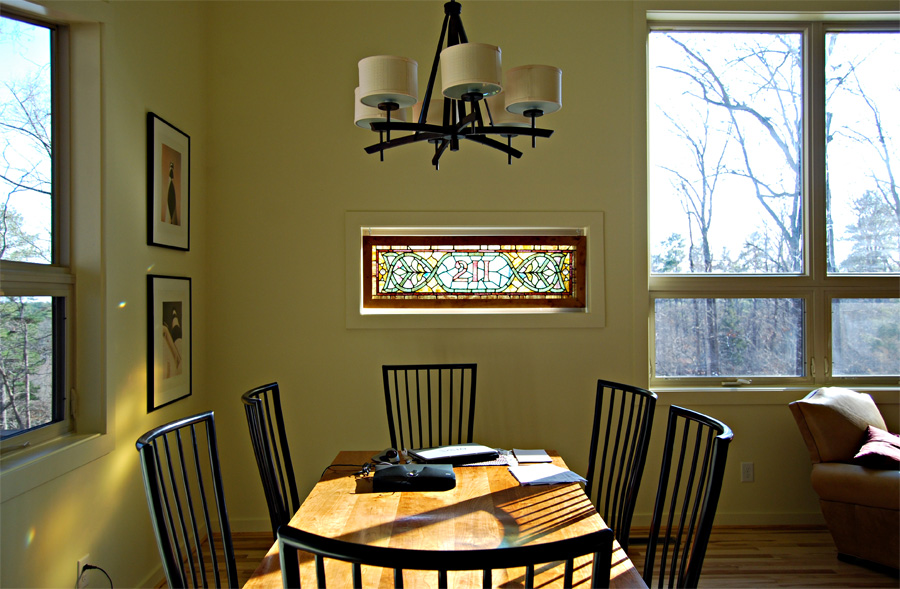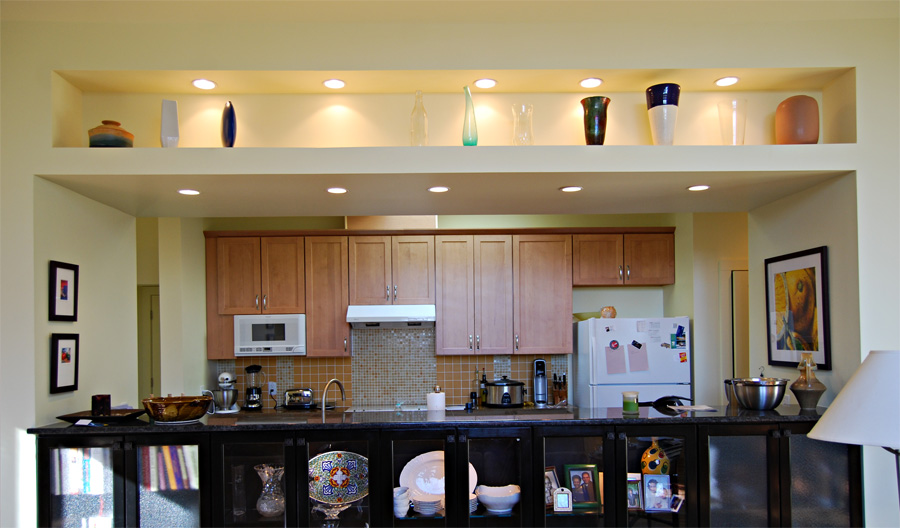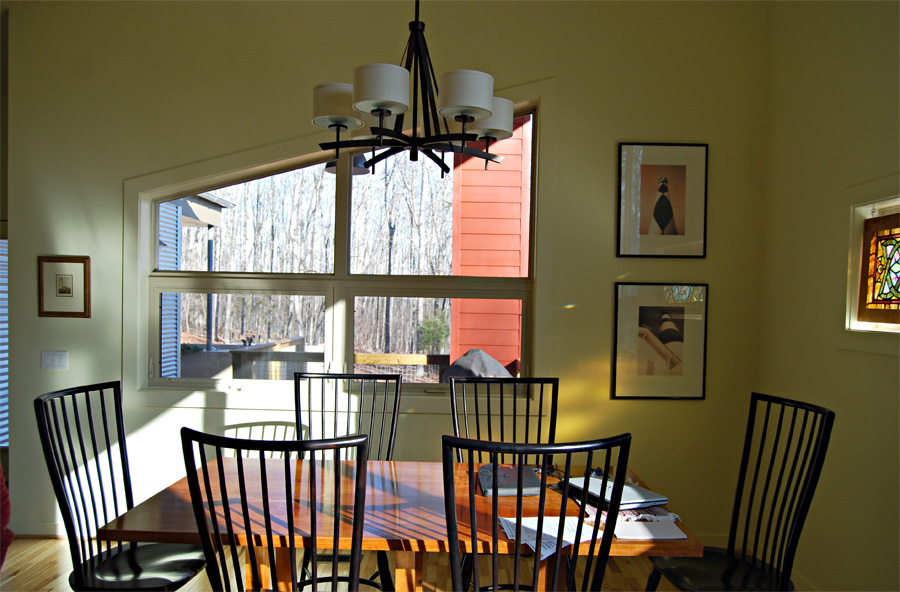In 2008, our firm was commissioned to create a new single family residence in Hillsborough, North Carolina. As was the case with the Dabbs residence, I had the opportunity to make first contact and meet with Michael and Gerry on site. The lot was steeply sloped, with a generous canopy of hardwood trees, well into the vibrant hues of a Carolina autumn.
After speaking briefly about our firm, projects we’d completed, and our process, we parted ways and I drafted up the design proposal for what I hoped would be another fantastic house in the country. Little did I know, the home that would arise out of the early sketches would become this affordable, green, modernist retreat.
From the very first sketches it became clear that the site constraints, context, and client needs would mandate something different from the more traditional structures we most often get asked to design.
Sustainability was a key discussion point from the first meeting. Rather than “building green” to make a statement, the clients were genuinely concerned about the impact of their new home on the landscape. Solar orientation was aimed at maximizing daylight, and passive solar heating in the winter. Overhangs were sized to block the harsh summer sun, while letting sun in during the cool evening months. The inverted sloped roof collects rainwater for local irrigation, minimizing the use of potable water in landscaping. The landscape plan utilizes a combination of indigenous and drought tolerant vegetation.
Using an engineered building envelope and properly sized HVAC system, we were able to minimize operational costs on the home, including a monthly guaranteed maximum utility cost. Where possible, we selected materials that were recycled, rapidly renewable, or locally manufactured.
A material palette was selected to respond to the rural context, in the case of the lap-siding painted a traditional barn-red seen all over rural North Carolina, as well as a corrugated siding that is at once both a hint at the agrarian structures surrounding the home, as well as the industrial power substation located nearby.
A generous front porch welcomes guests in, while providing ample views to the south.
The masonry selected were an attempt to balance the red-clay colors of the local soil with the grays of stone and the trees on site.
The screened porch is located to take advantage of the predominantly southern views, and the sun setting over the wooded hills to the west.
Carefully composed compositions throughout the structure act as a backdrop to the natural beauty of the site.
Local balance and symmetry is featured heavily on the exterior of the structure, with openings framing views and responding to interior functions. The main living volume cantilevers over the walkway to the basement for weather protection.
Interior spaces are bathed generously with sunlight, in an airy space that feels much larger than it really is.
Built in shelves showcase the couples ceramics collection, and a skylight over the kitchen brings natural light deep into the center of the house.
Older posts from during the construction process can be found here and here. Energy modeling and insulation by Prime Energy Group. You can also find information about this house on my page at Triangle Modernist Houses. I can’t thank Michael and Gerry enough for the opportunity to help make this house a reality, and I couldn’t be happier with the results.
